News & Blogs
In this blog, we touch on diverse topics about Japanese food cultures, practices together with the culinary secret, TREHA®, and its important role in the Japanese food industry. We hope our blog helps you obtain in-depth knowledge of the secrets and science behind Japanese cuisine, shared from our kitchen, to yours.
This article is dedicated to the late Sensei S. T. who taught me not only the formalities but also the true sense of hospitality and respect to others through the Japanese tea ceremony. I feel genuinely grateful and fortunate that he guided me through the world of this ancient Japanese tradition since the first day I stepped into it. Although a decade has passed since he left this world, a feeling of remorse occurs to me because I was not able to reciprocate him for the most valuable life lesson I received while he was present. I am hoping to express the deepest gratitude to my most admired sensei by sharing what he had taught me with the world.
What is the Japanese tea ceremony (茶道)? There is only one purpose for complicated manners, which is to have a good time while sipping some delicious tea.
According to Wikipedia, the Japanese tea ceremony (known as sado/chado (茶道, "The Way of Tea") or cha-no-yu (茶の湯) is preparing, serving, and drinking matcha green tea in a ritualistic and ceremonial way.
In the Japanese tea ceremony (茶道), there are standardized rules for all activities, such as how to prepare tea (temae 点前, procedure) and drink it, how to sit down, how to bow, how to stand, and how to walk. These rules were designed for both the host and guests. For the host, rules are for entertaining guests and serving delicious tea. For the guests, rules are for properly accepting the hospitality and appreciating tea served for them.
Unfortunately, because of these complicated rules, even a large number of the Japanese are under impression that the tea ceremony is strictly formal and way beyond everyday life. Though it is indeed hard to express the tea ceremony in a few simple words, a famous opinion leader described, "The tea ceremony is the standardization of daily life expressed through aesthetic manners." In other words, the tea ceremony is rooted in everyday life instead of incomprehensible formality meant only for philosophers.
The following are outlines of the rules on how to prepare tea (点前 temae.) You may be surprised by the simplicity.
Bring out the utensils needed to prepare tea and set them in front of guest(s).
Clean those utensils and place them in a position handy to prepare tea.
Prepare tea swiftly and efficiently and serve it to the guest(s).
Once the tea is served to all guests, the utensils are returned to the original set position.
Bring back utensils to finish the ceremony.
Temae (点前 procedure) is to constitute processes of the ceremony with attention to details. Even though the body movements to carry out the process vary depending on the school, the overall flow and the purpose are designed to serve fresh tea to the guest(s). The rules of temae (点前 procedure) were established through the tea ceremony practitioners’ relentless efforts to integrate systematic and orderly actions into the tea preparation with the aesthetic expression. All rules were aimed to avoid failing or skipping essential processes during the ceremony.
It seems to be persistent, but I have to repeat that these rules are made to produce an exclusive space and moment for the guests to enjoy a delicious tea. The ceremony achieves its goal only when the host and guest(s) are present because the bilateral positions induce mutual compassion.
“Be a host with the mind of a guest; be a guest with the mind of a host.”
These are the words of Lord Matsudaira Fumai (松平不昧 1751–1818), lord of the Matsue domain in the Edo period and also a tea master. The words insist on the importance of thinking from the other person's point of view, which is the exact mentality described in the English phrasing, "Do unto others as you would have others do unto you". This compassion is what every human cherishes at all times and places.
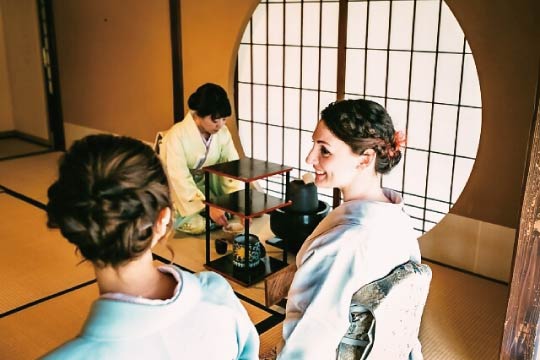
Forget about the rules for now. Let’s make delicious matcha tea.
I hope you are not overwhelmed by the philosophical aspects of the tea ceremony. Simply put, the essence of the tea ceremony is to have a good time drinking delicious matcha. Even without the official rules of procedure (点前 temae), properly made green tea should bring you a blissful and fulfilling moment. Let me share with you how to prepare delicious matcha green tea in freestyle.
There are two different styles of matcha drinks.
Koicha (濃茶 Thick tea): Koicha is served at the formal tea ceremony event. It's a very thick, pasty drink rather than an usucha (thin tea).
Usucha (薄茶 Thin tea): This is the common green tea, which is used for the café’s matcha latte.
Today, I would like to introduce how to make thin tea. The followings are necessary items for making matcha green tea:
Matcha powder (抹茶)
Chasen (茶筅 tea whisk)
Tea strainer
Tea bowl or alternative cup/bowl
Water
1. Matcha powder (抹茶)
The matcha powder price varies by grade. The ceremonial grade is highly recommended instead of a culinary grade for making tea. Although the ceremonial grade would cost more, the taste is dramatically better.
2. Chasen (茶筅 tea whisk)
Chasen is a bamboo whisk to prepare matcha, which is carved out of one piece of bamboo. The open end is torn into thin strips radiating in all directions with soft inward curves at each tip end. Though each tea school employs the design and material of whisk to suit its standard and preference, any types work for you since this is a freestyle preparation without any temae procedure. Nevertheless, a beginner is advised to use a whisk with 80 or 100 tips since it is easier to handle, efficiently making fine foams. A whisk is also available in a wide pricing range.
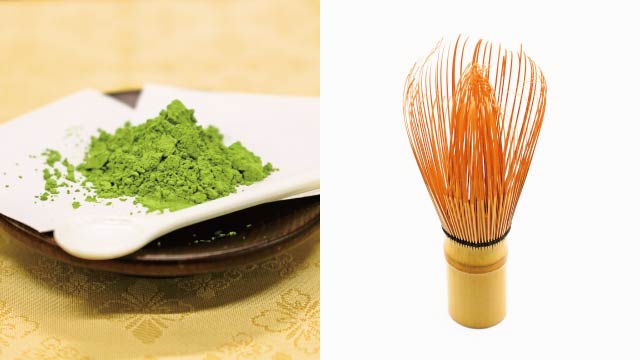
3. Tea strainer
Matcha powder is ground tea leaves into very fine particles, making it is easy to become lumpy. Without sifting the powder, the prepared tea may contain lumps remaining in your mouth. Therefore, it is important to sieve matcha with a tea strainer to break up any lumps in the tea powder before preparing tea.
4. Tea bowl or alternative cup/bowl
A large cup or a café au lait bowl will do. It doesn’t have to be a fancy matcha tea bowl.
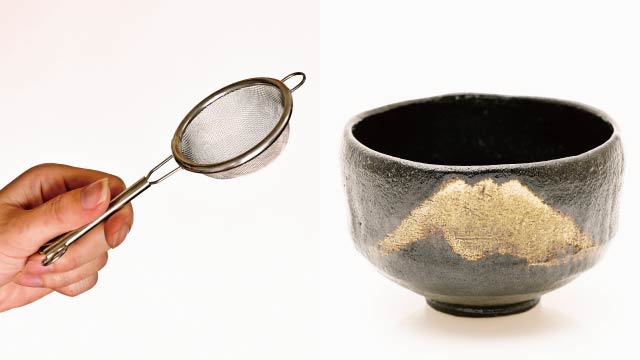
5. Water
Soft water is suitable for matcha tea. When using tap water, use a water purifier or leave the water overnight, or boil for 5 minutes to remove the smell of chlorine.
Boil the water first and cool it down to the optimal temperature for different purposes. One way to do this is to use a measuring cup to adjust the temperature. 175-195°F (80-90°C) is the best for warming a tea bowl. Temperatures for making tea are the best at 160-175°F (70-80°C) in summer and 165-185°F (75-85°C) in winter. Please note that if the temperature is either low or too high, beautiful foams will not appear.
How to prepare delicious matcha (usucha 薄茶):
Step1: Warm the bowl.
To generate sufficient foams, which are the best part of usucha, the water temperature needs to be properly adjusted. To do this, use hot water to warm the tea bowl, which is also aimed to reduce the cold sensation when the bowl touches the lips.
Step2: Moisten tips of the chasen (bamboo whisk)
Since the bamboo whisk is frail and easy to break off when it is dry, soak tips in the hot water while warming up the bowl. When moistened, the tips gain the flexibility to withstand the vigorous whisking process.
Step3: Sieve matcha powder using a tea strainer
To prepare matcha green tea with a nice smooth texture, it is important to sieve the matcha powder with a tea strainer to make them smooth without any lumps. Discard the hot water after warming up the bowl, wipe off the remaining water completely with a cloth, and add about 1.5g (a little less than 1 teaspoon) of green tea powder sifting through the strainer over the bowl.
Step 4. Pour hot water and whisk
Pour 2-2.5 fl oz/60-70cc of hot water adjusted at the appropriate temperature, hold the whisk perpendicular to the bottom of the bowl and whisk. This process takes about 10 to 20 seconds using three different techniques.
At first, place the whisk at the bottom and slowly disperse the matcha to generate nice foams, then slightly raise the whisk upward and keep whisking in the side-to-side movements using your wrist. Make sure the hot water doesn’t whirl. After the coarse foams are observed, raise the tips to the surface and whisk slowly to make the foams finer. Finally, gently remove the whisk in the center of the bowl to let foams gather in the middle for presentation.
Once you see creamy fine foams on the tea surface, indulge yourself with your beautiful creation! It is recommended to have sweets before drinking tea because the lingering sweetness in the mouth supposedly enhances the taste of green tea. However, it is up to you since it is a freestyled type of matcha tea preparation!
Before concluding the post, I should note that some schools suggest making tea without foams. You might find it interesting to compare the taste of matcha tea with or without foams.
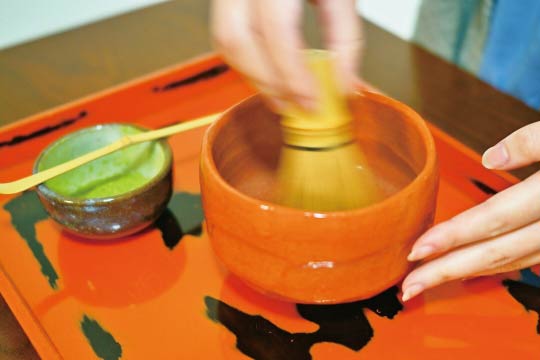
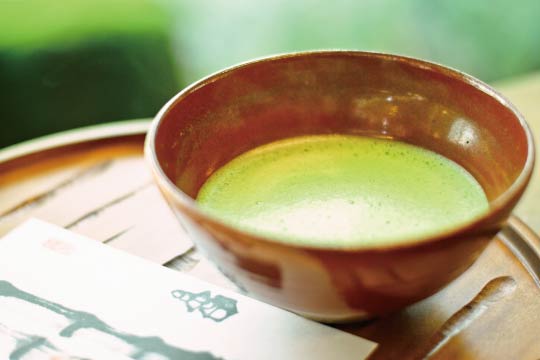
Now that you are successfully making delicious matcha green tea for yourself. Why not take a little more adventure? In the next post, I will invite you to an imaginary informal tea gathering, called chakai (茶会). Please look forward to it!!
Did you find this blog interesting?
Please share it with your friends in the food service industry.
We regularly update the blog about the food culture of Japan, where TREHA® was discovered for culinary applications.
Click here and send us a message to subscribe.
Or hit us up on Instagram @trehalose_sensei!
You might also be interested in:
Matcha Stories Part 3: Welcome to the imaginary Chakai (茶会), casual tea gathering! 1 of 2
Matcha Stories Part 4: Welcome to the imaginary Chakai (茶会), casual tea gathering! 2 of 2
Japanese traditional food series 1: Inoko mochi (亥の子餅)

